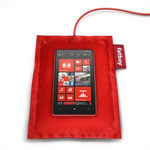Is Ethernet For Autos?
March 11, 2014 by admin
Filed under Around The Net
Comments Off on Is Ethernet For Autos?
The most ubiquitous local area networking technology used by large companies may be packing its bags for a road trip.
As in-vehicle electronics become more sophisticated to support autonomous driving, cameras, and infotainment systems, Ethernet has become a top contender for connecting them.
For example, the BMW X5 automobile, released last year, used single-pair twisted wire, 100Mbps Ethernet to connect its driver-assistance cameras.
Paris-based Parrot, which supplies mobile accessories to automakers BMW, Hyundai and others, has developed in-car Ethernet. Its first Ethernet-connected systems could hit the market as soon as 2015, says Eric Riyahi, executive vice president of global operations.
Parrot’s new Ethernet-based Audio Video Bridging (AVB) technology uses Broadcom’s BroadR-Reach automotive Ethernet controller chips.
The AVB technology’s network management capabilities allows automakers to control the timing of data streams between specific network nodes in a vehicle and controls the bandwidth in order to manage competing data traffic.
Ethernet’s greater bandwidth could provide drivers with turn-by-turn navigation while a front-seat passenger streams music from the Internet, and each back-seat passenger watches streaming videos on separate displays.
“In-car Ethernet is seen as a very promising way to provide the needed bandwidth for coming new applications within the fields of connectivity, infotainment and safety,” said Hans Alminger, senior manager for Diagnostics & ECU Platform at Volvo, in a statement.
Ethernet was initially used by automakers only for on-board diagnostics. But as automotive electronics advanced, the technology has found a place in advanced driver assistance systems and infotainment platforms.
Many manufacturers also use Ethernet to connect rear vision cameras to a car’s infotainment or safety system, said Patrick Popp, chief technology officer of Automotive at TE Connectivity, a maker of car antennas and other automobile communications parts.
Currently, however, there are as many as nine proprietary auto networking specifications, including LIN, CAN/CAN-FD, MOST and FlexRay. FlexRay, for example, has a 10Mbps transmission rate. Ethernet could increase that 10 fold or more.
The effort to create a single vehicle Ethernet standard is being lead by Open Alliance and the IEEE 802.3 working group. The groups are working to establish 100Mbps and 1Gbps Ethernet as de facto standards.
The first automotive Ethernet standard draft is expected this year.
The Open Alliance claims more than 200 members, including General Motors, Ford, Daimler, Honda, Hyundai, BMW, Toyota, Volkswagen. Jaguar Land Rover, Renault, Volvo, Bosch, Freescale and Harman.
Broadcom, which makes electronic control unit chips for automobiles, is a member of the Open Alliance and is working on the effort to standardize automotive Ethernet.
Software Glitch Hits Prius
February 25, 2014 by admin
Filed under Around The Net
Comments Off on Software Glitch Hits Prius
Toyota is recalling nearly 1.9 million Prius hybrid automobiles globally in order to fix a software glitch that could damage transistors and cause a loss of power.
Some 700,000 of the Priuses are in the U.S., according to a statement. Another 997,000 are in Japan, 130,000 in Europe and the remainder in other places around the world, according to media reports. Toyota didn’t immediately respond to a request for confirmation of those details on.
Toyota plans to tweak software in the Priuses for the motor/generator ECU (engine control unit) and the hybrid control ECU. The current settings “could result in higher thermal stress in certain transistors, potentially causing them to become damaged,” Toyota said. “If this happens, various warning lights will illuminate and the vehicle can enter a failsafe mode. In rare circumstances, the hybrid system might shut down while the vehicle is being driven, resulting in the loss of power and the vehicle coming to a stop.”
Toyota is also recalling about 260,000 2012 RAV4 compact sport utility vehicles, 2012-2013 Tacoma trucks and 2012-2013 Lexus RX 350 SUVs in the U.S., the company said Wednesday.
Toyota will apply an update to skid control ECU software on cars in this recall to fix an “electronic circuit condition” that could cause the vehicles stability control, anti-lock braking systems and traction control function to shut down intermittently, Toyota said. However, in the event of such a failure the standard brakes will still work, according to the company.
No accidents or injuries have been reported in connection with the software problems, Toyota said. The software update will be applied free of charge at local dealers.
Toyota Goes Wireless Charging
January 2, 2013 by admin
Filed under Around The Net
Comments Off on Toyota Goes Wireless Charging
 Toyota is taking the smartphone boom quite seriously and the car-maker hopes to offer the first wireless charging systems in select models as early as next year.
Toyota is taking the smartphone boom quite seriously and the car-maker hopes to offer the first wireless charging systems in select models as early as next year.
Toyota’s wireless system will be compatible with the Qi standard and it will be introduced in the new Avalon sedan next year. Of course, it will be optional and it will be part of Toyota’s $1,950 “technology package” which includes other geeky goodies as well.
According to the BBC, Chrysler is also planning to offer a similar system in the Dodge Dart. Other car-makers will no doubt offer wireless charging functionality sooner rather than later.
The number of Qi compatible phones is limited for the time being. Just 34 phones support it, including the Lumia 920, Nexus 4 and HTC Windows Phone 8X. However, some very popular devices like Apple’s iPhone and Sammy’s Galaxy S series phones don’t support wireless charging just yet.








 Sign up for our Technology Newsletter
Sign up for our Technology Newsletter